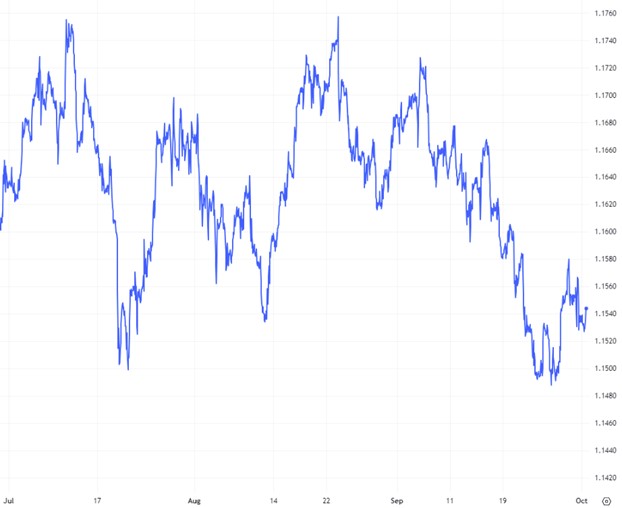GBP-EUR Exchange Rate Sinks to Multi-Month Lows in September
The GBP-EUR pair was dented at the start of the month by nonfarm payrolls and unemployment readings from the US which failed to match forecasts – sparking dollar volatility and consequently buoying the euro.
The pound traded erratically against the euro on 5 September after it was revealed that the UK services PMI contracted in August amid waning domestic demand due to soaring borrowing costs and inflationary pressures. The PMI came in at 49.5, compared to 51.5 in July – the quickest decline since January – stoking renewed recession fears.
Having briefly jumped just above the 1.17 benchmark, the GBP-EUR pair slid to a one-week low on 7 September as markets digested dovish remarks from Bank of England (BoE) Governor Andrew Bailey.
The pound managed to recoup some of its losses after German industrial production contracted more than forecast in July and the Eurozone’s third GDP growth rate estimate was revised lower – creating headwinds for the single currency. However, a souring market mood and diminishing BoE rate hike bets kept a lid on the pound’s progress.
The UK currency fell sharply to a one-month low against the euro on 13 September after a bigger-than-forecast contraction in the UK economy in July reignited recession fears. The GDP reading showed that the economy shrank 0.5% in July, worse than the expected contraction of 0.2%.
Having briefly dipped below the 1.15 benchmark, the pound rebounded on investor anxieties ahead of the European Central Bank’s (ECB) interest rate decision – with a potential end to the ECB’s hiking weighing on the euro.
The GBP-EUR pair leapt into the 1.16 mid-range the following day after the ECB raised interest rates by 25bps – its tenth consecutive hike – before indicating that rates may have peaked.
The pair soon tumbled to within touching distance of 1.16 after the euro benefitted from its negative correlation with the dollar, which was bruised by below-forecast consumer confidence in the US, prompting concerns about the economy.
Fast-forward to 20 September and the GBP-EUR pair, which had been slipping lower for several days, plunged to a six-week low following the UK’s latest inflation print. The consumer price index came in below forecasts, causing investors to recalibrate BoE interest rate expectations.
The pair’s decent gathered pace the following day after BoE rate-setters voted to leave interest rates unchanged – causing GBP-EUR to drop to a four-month low and test the 1.15 benchmark. Despite leaving the door open to future rate hikes, speculation was rife that the central bank may have ended its tightening cycle.
The BoE’s dovish decision was soon compounded by the prospect of weaker economic growth in the year ahead and lacklustre retail sales data. Meanwhile, stronger-than-expected PMI results helped to buoy the single currency. Under this weight of pressure, the GBP-EUR pair dropped into 1.14 territory for the first time since mid-May.
Having clawed itself back above the 1.15 benchmark, the pair held close to a four-month low amid the UK economic gloom.
GBPEUR: 3-Month Chart

Looking ahead
Influential data from the UK economy in October: Claimant Count Change (17 October), Employment Change (17 October), ILO Unemployment Rate (17 October), Consumer Price Index (18 October), Retail Sales (20 October), S&P Global/CIPS Composite PMI (24 October).
The BoE’s next policy meeting is scheduled for November. Before then, the ECB makes its next interest rate announcement on 26 October, with an end to its hiking cycle in the offing after the central bank signalled rates may have peaked.






